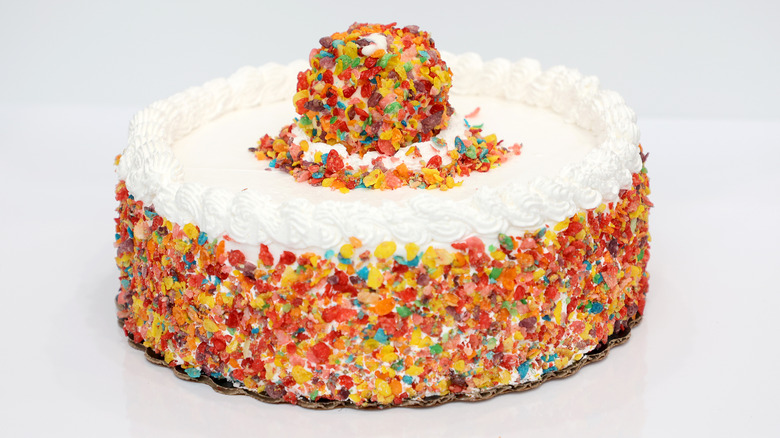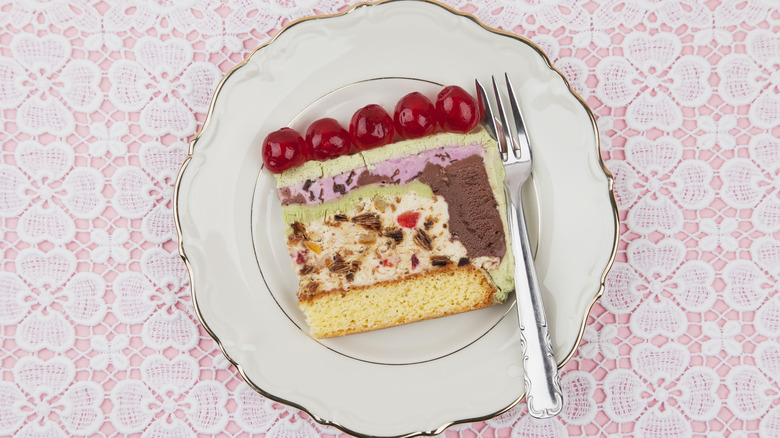How Long Should Ice Cream Cake Sit Out Before Serving?
Like soft serve ice cream, a classic ice cream cake is one of the hallmarks of a carefree summer, and a birthday party staple that tastes just as good whether you're five or 50. Typically made with layers of ice cream interspersed with crunchy crushed cookies or sprinkles, and decorated to resemble a grocery store sheet cake, the surprising part is an ice cream cake often doesn't contain any "cake" at all.
Because it's mostly ice cream, it needs to be stored in the freezer. Which also means it might be too hard to cut into when you first take it out. Like any classic store-bought ice cream, it generally needs to be thawed first. But you don't want to just leave it out on the counter. When ice cream is allowed to thaw at room temperature, it does so from the outside in. So when you try to cut into your partially-thawed ice cream cake, you might find that the inside is still frozen solid, even if the edges are soft.
To get around this, we went to an expert for advice. Sasha Zabar, Founder and Chef at Glace by Noglu, told Food Republic, "If an ice cream cake has been in the freezer and is rock solid, I tell customers to move it to the fridge 45 minutes before consuming; 10 minutes before serving, customers should let the cake sit at room temperature to finish tempering." Tempering refers to the process of gradually bringing a dish to a warmer temperature so as not to spoil its texture.
Why ice cream cake takes some patience
Ice cream should ideally be stored in a freezer set to between 0 and 10 degrees Fahrenheit. However, it often gets rock hard in the freezer because it has little air in its composition and a lot of butterfat, which give ice cream its creamy texture when cold, but a dense one when frozen. In the freezer, it will undergo a process in which fat cells coalesce, and ice crystals form, and this process will need to be reversed for it to be of a suitable texture to eat.
Where typically you might pop your ice cream in the microwave for a few seconds to get it to loosen up, it's unlikely that your ice cream cake will fit in a standard microwave. And even if it did, the size prevents it from melting evenly. As many ice cream cakes are frosted with whipped cream, which will melt faster than the ice cream, this adds another layer of complication.
So thawing low-and-slow is really the name of the game. If you're running short on time, you can also run your kitchen knife under hot water until the blade is warm, and use this to help get a cleaner cut out of a cold ice cream cake. Either way, you'll end up with a delicious treat ... that won't leave you with a bent spoon and brain freeze.


